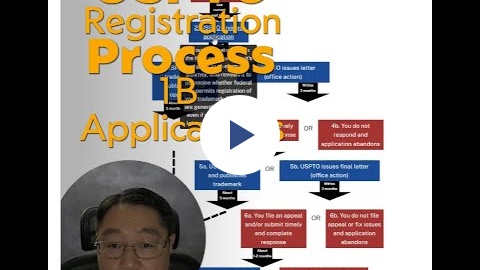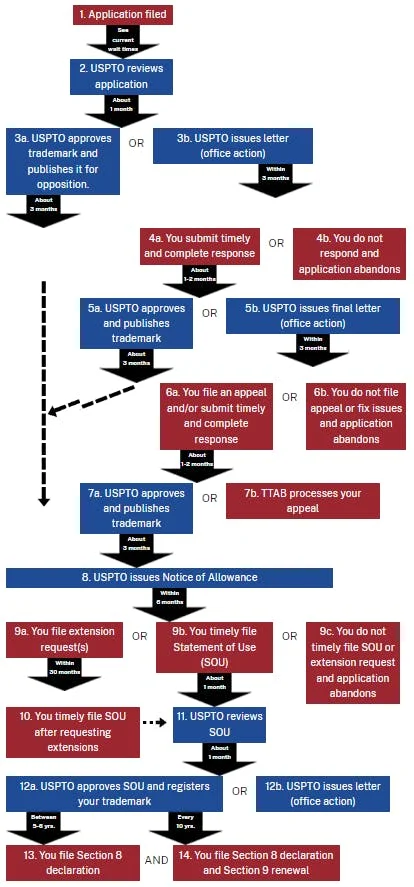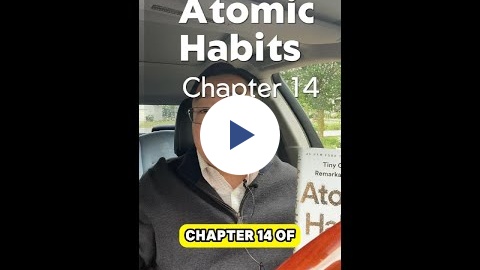Video Walkthrough: USPTO Trademark Registration Process 1B (Intent to Use)
Hello Reader,
Video Walkthrough USPTO Trademark Registration Process 1B
USPTO Trademark Registration Process 1B (Intent to Use) 

Section 1(b) timeline | USPTO Transcript:
USPTO Trademark Process. How does it work? In this video, we're talking about 1B or Intent to Use applications. These are applications that you file because you want to have your trademark registered, but your goods and services are not in use in commerce yet. Remember, you have to have your goods and services in commerce before your trademark will be registered, but you can file the application before the specimens are ready.
Today, we'll follow a 1B or Intent to Use application and what the process is. Go to the USPTO. gov website, click on this trademark tab. And it's going to take you to timeline to process an application.
1A we did in a different video. This is where your services and goods are currently in use in commerce. And you file the trademark application that way. Here, we're going to click on this. What this means is that it's not in use yet, but you plan on having it in use in commerce soon. But you want to protect it and start the process.
Remember, everything in red is what you do, everything in blue is what the USPTO does. You file your application; they're going to tell you it's going to take about 8 months right now. Here is the current time frame right now, they're reviewing things from last September Right now, it's May 28th, so it's about 8 months, a little bit less than 8 months.
This is the current wait time that we're looking at here. USPTO will review the application, and then they'll take one of two actions. They'll either approve the trademark application and publish it for opposition, or they'll issue an office action. Let's say they approve it. What they'll do is go down to publication assuming no one has filed an opposition to the trademark registration, they'll issue a notice of allowance.
This is when they say, "Okay, everything in this whole process is good, we just need to see proof of use." Here, you see all the red actions that you need to do in order to take the next steps. You can either file an extension saying, we're not ready, we need another six months before our specimens are ready or you file a Statement of Use, which is saying these specimens are currently in use right now, here is my declaration and the documents and the proof that they are currently in use in commerce. Or you don't do any of that, which in that case, if you don't file anything timely, your application will abandon.
And so, you could revive it, but it costs you money to revive it. But let's say you do file an extension. You can have up to five extensions of six months each. Once the notice of allowance is issued, you have approximately three years if you file five extensions to provide your statement of use.
Let's say you run out of extensions. What do you do? Well, you don't have any more options at that point. Unfortunately, if you don't file a statement of use by the end of that period, your application will abandon. You will have to file a new trademark application.
And you
can file a new trademark application.
Let's say you do file a timely statement of use. The USPTO will review it, remember everything in blue, they will do. They will either approve the statement of use or they'll issue an office action saying this does not comply or this the specimens do not match the drawings.
And if it's approved then your application will be registered, and this goes on to filing the section 8 at the 5th year mark and Section 8 and 9 at the 10-year mark.
Let's say you do file the application and it doesn't go quite well and the USPTO issues you an office action, then you have two options. You can either submit a timely response. If it's approved, everything's resolved, then it moves on to publication for opposition. Assuming nobody opposes it, then it goes on to the notice of allowance and it follows that loop.
If they issue you a final office action, you can either respond to the final office action and/or file an appeal to the TTAB, Trademark Trials and Appeals Board.
Or if you do not fix it, then the application will be abandoned. Let's say you do file the TTAB appeal, TTAB will review it, either confirm the refusal, maintain the refusal, or reverse it.
That is, in a nutshell, the 1B application. As I mentioned previously, this nutshell is not so small, but you can go follow the same path and hover over these different elements and the USPTO will tell you a little bit more detail on what's required of each step.
HOW TO PROTECT YOUR TRADE SECRETS
The Non-Compete Clause Rule follows on the heels of several states effectively “outlawing” non-competition agreements. It prohibits, as “an unfair method of competition,” all non-competition clauses or agreements between workers and employers as of the effective date. Many fear that this rule means the end of protecting a company’s trade secrets. Protecting Your Business: Practical Tips To Keep Your Trade Secrets Secret BUSINESS TIPS AND TRICKS
This is Week 14 and Chapter 14 of our 20-part Atomic Habits by James Clear weekly read through! Get the book and join us every week!

Transcript:
Hello! Welcome to week 14, chapter 14 of James Clear's Atomic Habits in this chapter, it states how to make good habits, inevitable and bad habits, impossible. He gives a story about Victor Hugo in the summer of 1830, where his publisher reminded him that he was committed to finishing a book by February of next year
What Victor Hugo did was he told his assistant put all his clothes away in a chest and lock it up that way He only had a shawl that he had available and because he didn't have any proper clothes to go outside with. He forced himself to stay inside and finish writing his novel because he couldn't access his clothes because he told his assistant to lock it away.
That is what psychologists call a commitment device. Victor Hugo, while he was in proper mindset, created a commitment device. In a moment of temptation, he would be committed to that event.
A commitment device that James Clear uses is when he goes to a restaurant, he tells the waiter before the food is served to split it in half and put half of it in a to go container while he eats the other half.
He notices that if he doesn't apply that commitment device prior to eating it, he says he's going to eat only half of it, but ends up eating a lot more. One example of this for nutrition is to buy smaller plates so you have smaller portions. Alright, that's it for week 14. We'll see you next week for week 15, chapter 15.
Have a great day.
If you would like to follow along with the series, here is our Atomic Habits by James Clear playlist:

Thank you for being a part of our community, and we look forward to helping you safeguard your brand's identity and thrive in the world of trademarks!
Warm regards,
J.J. Lee and the Trademark Lawyer Law Firm Team! PS. Be Sure to Add Us to Your Contacts 📞 To ensure that you never miss an important update or exclusive offer from us, please add our email address to your contacts. This way, you can rest assured that our newsletters will always land safely in your inbox, ready to be explored.








